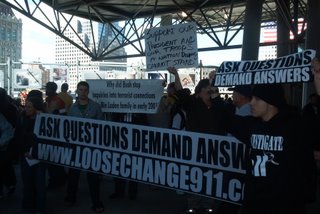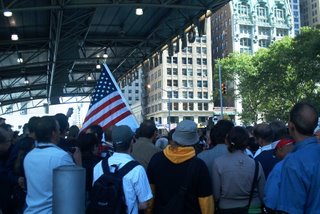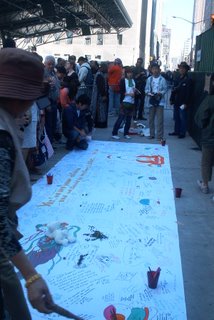Skinny: Banned but Favored
“Armani weights in to row over thin models” titled an article - hopefully pun intended – featured on this morning’s Yahoo’s website.
Fashion designer Armani agreed that he had always used models "on the slender side", adding: "This was because the clothes I design and the sort of fabrics I use need to hang correctly on the body", the AFP story reads.
The row over banning the on-the-slender-side models from runways started when Madrid, whose regional government cosponsored the fashion show held there this month, excluded one third of the models who ran shows in 2005 from attending because they were deemed too thin.
Madrid took this action to avoid sending the wrong message to its teenage girls. The organizers said they wanted to "help ensure public opinion does not associate fashion, and fashion shows in particular, with an increase in anorexia, a disease which, along with bulimia, is considered ... as a mental and behavioral problem".
So just how thin is too thin?
In Madrid, a model’s body mass index (BMI) needed to be at least 18.
Measured with 5’9”, the required height for a fashion model, this means she needs to weight at least 122 pounds.
According to the measurements found on auditionagency.com, these 122 pounds are about the fashion business’s maximum. They call for models to be between 108 and 125 pounds.
Will banning skinny fashion models change women’s view on how desirable it is too be thin? Not according to a recent survey conducted by the UK University of Bath.
“This study shows us why using thin models is a successful strategy by advertising companies," said Professor Brett Martin, of the University of Bath’s Marketing Group in its School of Management.
The researchers interviewed 470 female undergraduates. Only 29 percent reacted favorably to models of a larger size while 67 per cent reacted favorably to print advertisements, in this case food products such as up-market salad combinations and gourmet hamburgers. featuring thinner female models.
Those who preferred thinner models tended to believe that weight can be controlled by dieting or exercise. They tended to think the thinner models were more “elegant”, “interesting”, “likeable” and “pleasant”.
Thinner women were more likely to believe weight could be controlled. They also were less likely to have friends who were larger women, and some of them believed that larger women were a little untrustworthy.
With thinner women obviously still being the role models, how far will Armani go to make sure that his clothes are hanging on the right kind of bodies?
His online Armani Exchange Fashion Clothing store delivers sizes PO to 14. This is up to plus six the average dress size (2-4) worn by the fashion models on the runways but it still leaves out half of the American women whose average size is 14.
http://http://news.yahoo.com/s/afp/20060921/en_afp/afpentertainmentbritainitalyfashionarmani
http://news.yahoo.com/s/afp/20060908/lf_afp/afplifestylefashion_060908143012
http://www.bath.ac.uk/news/articles/research/models200906.html
http://www.nhlbisupport.com/bmi/bmicalc.htm
Fashion designer Armani agreed that he had always used models "on the slender side", adding: "This was because the clothes I design and the sort of fabrics I use need to hang correctly on the body", the AFP story reads.
The row over banning the on-the-slender-side models from runways started when Madrid, whose regional government cosponsored the fashion show held there this month, excluded one third of the models who ran shows in 2005 from attending because they were deemed too thin.
Madrid took this action to avoid sending the wrong message to its teenage girls. The organizers said they wanted to "help ensure public opinion does not associate fashion, and fashion shows in particular, with an increase in anorexia, a disease which, along with bulimia, is considered ... as a mental and behavioral problem".
So just how thin is too thin?
In Madrid, a model’s body mass index (BMI) needed to be at least 18.
Measured with 5’9”, the required height for a fashion model, this means she needs to weight at least 122 pounds.
According to the measurements found on auditionagency.com, these 122 pounds are about the fashion business’s maximum. They call for models to be between 108 and 125 pounds.
Will banning skinny fashion models change women’s view on how desirable it is too be thin? Not according to a recent survey conducted by the UK University of Bath.
“This study shows us why using thin models is a successful strategy by advertising companies," said Professor Brett Martin, of the University of Bath’s Marketing Group in its School of Management.
The researchers interviewed 470 female undergraduates. Only 29 percent reacted favorably to models of a larger size while 67 per cent reacted favorably to print advertisements, in this case food products such as up-market salad combinations and gourmet hamburgers. featuring thinner female models.
Those who preferred thinner models tended to believe that weight can be controlled by dieting or exercise. They tended to think the thinner models were more “elegant”, “interesting”, “likeable” and “pleasant”.
Thinner women were more likely to believe weight could be controlled. They also were less likely to have friends who were larger women, and some of them believed that larger women were a little untrustworthy.
With thinner women obviously still being the role models, how far will Armani go to make sure that his clothes are hanging on the right kind of bodies?
His online Armani Exchange Fashion Clothing store delivers sizes PO to 14. This is up to plus six the average dress size (2-4) worn by the fashion models on the runways but it still leaves out half of the American women whose average size is 14.
http://http://news.yahoo.com/s/afp/20060921/en_afp/afpentertainmentbritainitalyfashionarmani
http://news.yahoo.com/s/afp/20060908/lf_afp/afplifestylefashion_060908143012
http://www.bath.ac.uk/news/articles/research/models200906.html
http://www.nhlbisupport.com/bmi/bmicalc.htm



